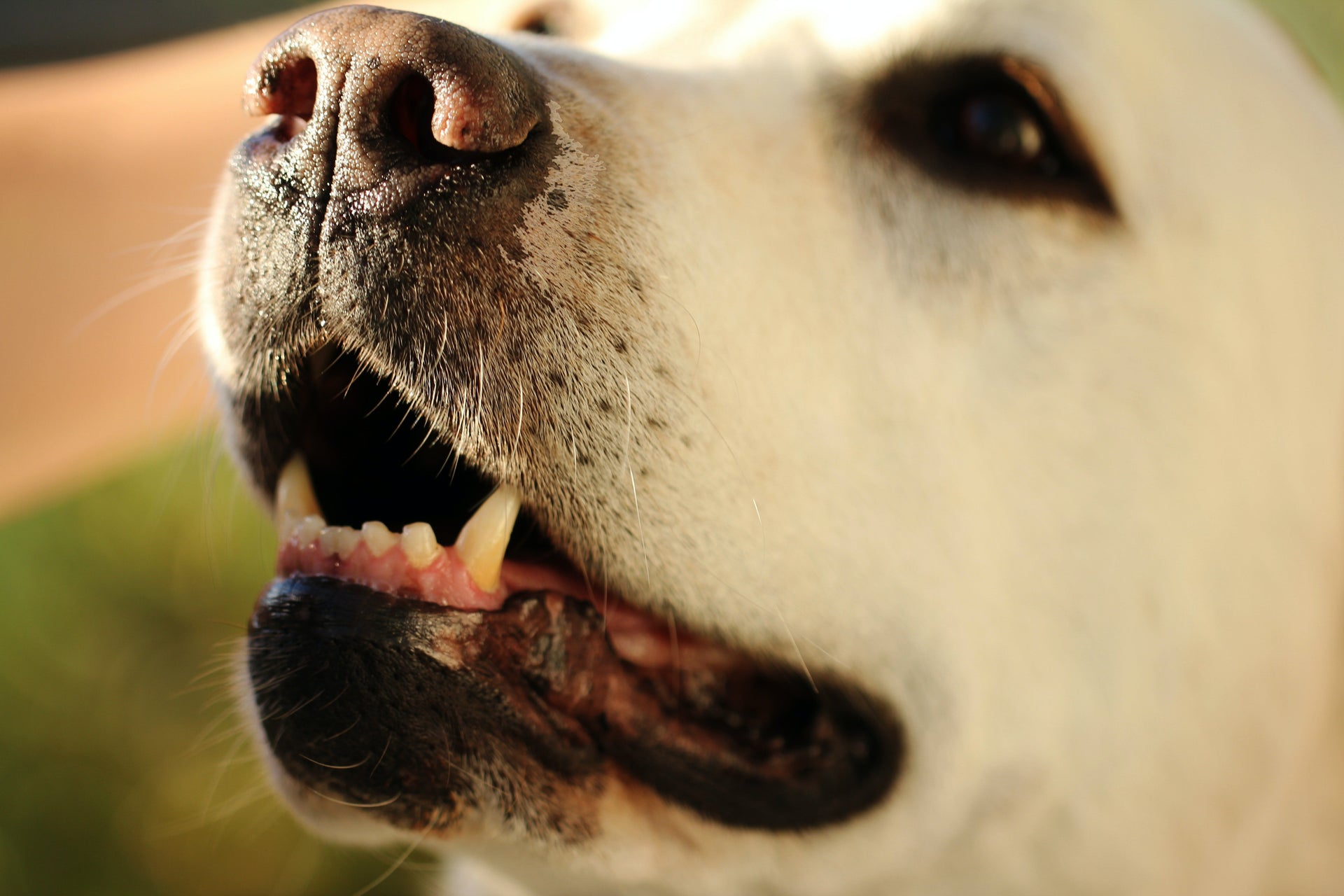Can you Reverse Periodontal Disease in Dogs?
October 21, 2025

Published: June 2022 | Updated: February 2025
Periodontal disease is a serious problem in dogs. In many cases, it can be treated and prevented with a regular oral care routine that includes brushing your dog's teeth and administering dental cleaning every six months or so.
However, if left untreated or discovered too late, the infection can spread quickly and become fatal. Here's what you need to know about the stages of periodontal disease in dogs so you can protect your pet from this dangerous condition.
Stage 0: Gingivitis
Gingivitis is caused by plaque and tartar build-up on the surface of your dog's teeth. This buildup irritates the gums, causing them to become red and swollen. Dogs with gingivitis may also experience bad breath, as they can't keep up with all of their oral hygiene needs while trying to chew through plaque constantly building up in their mouth.
If you notice any signs of inflammation in your dog's mouth (such as redness or swelling), it's best not to wait until symptoms worsen; this way, they can be treated while they're still reversible.
Stage 1: Mild Periodontitis
In this grade of dental disease in dogs, you may notice that the gums are inflamed and are red or pink. The gums may be swollen and may bleed when your dog brushes against them. Your dog may have bad breath or have a loss of appetite. You might also see weight loss in your pet due to poor nutrition due to the condition of their teeth.
The treatment for mild periodontitis is scaling and root planing (tooth cleaning). This procedure removes any tartar buildup on the surface of your dog's teeth as well as calculus (hardened plaque) from underneath each tooth root near where it attaches to the bone of his jawbone.
This procedure is usually done under anesthesia, but it can be very painful for your pet if no anesthetic has been used during its implementation, so it’s recommended to request the anesthetic if it’s not planned to be used.
Stage 2: Moderate Periodontitis
At this stage, the inflammation has progressed to a moderate level and involves most of the tooth root. The gums are red and swollen around the base of some or all of your dog's teeth. Your dog may have difficulty chewing hard foods because they may be loose in their sockets or may even fall out completely. You may notice bleeding when you brush your pet's teeth, but it may be difficult to get him to sit still long enough for you to do so.
Your dog also might have bad breath as bacteria grows on his gum line and between his teeth, causing an unpleasant odor that can make him unbearable for other people or animals he comes into contact with during exercise time outside or cuddle time inside.
If left untreated at this point, severe bone loss could occur, which would require extensive surgery by a veterinary surgeon in order for your pet's mouth cavity to not become infected with bacteria once again (a common occurrence post-surgery).
Stage 3: Advanced Periodontitis
Advanced periodontitis is characterized by severe periodontal destruction, loss of attachment, and can lead to tooth loss. Advanced periodontitis in dogs is often referred to as necrotizing ulcerative gingivitis (NUG).
NUG is a chronic and progressive dental disease that is characterized by necrosis or death of the soft tissue due to periodontal ligament, gingiva, and alveolar bone.
NUG patients exhibit a loss of bone around the teeth, which causes tooth mobility, pain, and sensitivity. In advanced cases, it may not be possible to save the animal's teeth because insufficient bone remains to stabilize them.
Treatment for NUG depends on how far along the disease has progressed at the time you notice symptoms. If your dog is diagnosed early enough, antibiotics may be able to clear up the infection before it spreads into other tissues in your pet's body. If not treated quickly enough, however, NUG can cause death within days if left untreated or if treatment isn't effective at controlling it.
Stage 4: End-Stage Periodontal Disease
End-stage periodontal disease is the last stage of this disease, and it's a terrible one. End-stage periodontal disease (ESPD) is a very serious condition that requires immediate veterinary attention. At this point, the disease has progressed to such an extent that it is affecting your dog's overall health and well-being.
It occurs when the teeth become so damaged that they cannot be saved. The disease can only be treated by removing the affected teeth, which will leave your pet with no teeth at all. This is obviously not an ideal situation for most dogs, and it is important that you take steps to keep your dog from getting to this point in the first place.
The Gut-Brain Axis
The mouth and the gut are both parts of the digestive tract. When one part of your dog’s body isn’t working properly, it can have a negative effect on another part of their body.
The mouth and the gastrointestinal tract are connected through a system called the “gut-brain axis”. This means that when something goes wrong with one part of their digestive system, it can cause problems elsewhere in their body.
The gut-brain axis has been implicated in a variety of gastrointestinal disorders such as irritable bowel syndrome (IBS), inflammatory bowel disease (IBD) and colorectal cancer (CRC). However, the role of this axis in dental diseases has not been investigated until recently.
The gut-brain axis is particularly important in relation to dental disease in dogs because it has been shown that stress can alter intestinal permeability (leaky gut) and increase inflammation within the GI tract. This can cause a feedback loop that results in increased inflammation of your pet's teeth, gums, and jawbone, which makes them more susceptible to bacterial infection.
Fortunately, a balance of good and bad bacteria can be achieved through the use of a high-quality probiotic, like Daily Dog, and reduce the risk of not only periodontal disease but others as well. These supplements contain live microorganisms that are beneficial to your pet's health by promoting digestion and improving overall gastrointestinal function.
Maintain Your Dog's Dental Health
Dental disease is common in dogs, and it can cause painful infections, abscesses, and even tooth loss. Dental disease can also lead to more serious health problems, such as diabetes or heart disease. Your dog's teeth should be checked regularly by a veterinarian; at least every six months, unless you notice an abnormality sooner than their regular checkup appointment.
You should brush your dog's teeth at least twice a week to avoid plaque buildup. If your dog gets into something that could hurt his mouth, such as bones or toys with sharp edges, take him to the veterinarian immediately so he can receive treatment for any injuries he may have incurred.
There are many products available for cleaning your pet's mouth, including toothpaste made specifically for dogs and specialized toothbrushes to get those hard-to-reach areas. Your veterinarian will recommend which type works best for you and your dog based on their individual needs.
Preventing Dental Disease in Dogs
Periodontal disease is a serious condition that can lead to tooth loss if left untreated. It is important to maintain your pet’s dental health by brushing their teeth regularly and having them examined by a veterinarian on a regular basis.
And remember, you can help keep your dog’s gut-brain axis functioning optimally with high-quality canine probiotics.

Research Citations
- 1) Probiotics and Oral Health, https://www.ncbi.nlm.nih.gov/pmc/articles/PMC2897872/
- 2) Use of Probiotics and Oral Health, https://www.ncbi.nlm.nih.gov/pmc/articles/PMC5688201/
- 3) A Critical Appraisal of the Effects of Probiotics on Oral Health, https://www.sciencedirect.com/science/article/pii/S1756464620302097
- 4) Periodontal Disease in Small Animals, https://www.merckvetmanual.com/digestive-system/dentistry/periodontal-disease-in-small-animals
